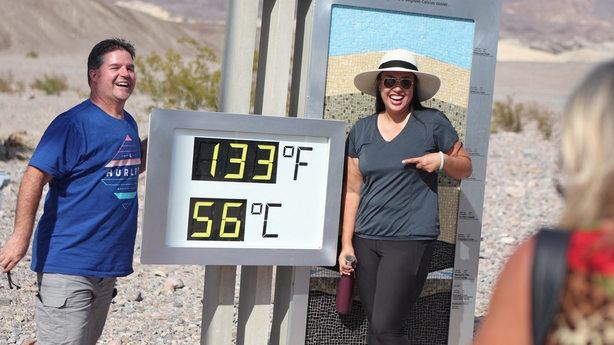An estimated 61,672 people died due to the heat in Europe last summer, most of them over the age of 80.
This year is shaping up to be even hotter.
As the mercury climbs, countries across Europe and the world are faced with the impact of extreme heat.
Scientists at the Intergovernmental Panel on Climate Change said in their global summary report this year that climate change had made such deadly heatwaves "more frequent and more intense across most land regions since the 1950s".
There are a host of organs and aspects of the body which swing into play when temperatures rise.
Here's a quick guide to the key ones.
First response - hypothalamus
The hypothalamus - a small area in the centre of the brain - regulates body temperature to keep it very close to 36C.
An increase of less than 10% - around three degrees - can have serious consequences.
As temperatures rise, the hypothalamus sends a signal instructing the blood vessels to widen, and so increase the flow at the skin's surface where warm blood will lose heat.
Blood pressure is lowered, forcing the heart to pump harder to push blood around the body, and speeding up the heartbeat.

The heart is of particular concern in hot weather, as it comes under extra pressure from several fronts, as we shall see.
This is of particular relevance for people with an underlying cardiovascular condition.
More immediately however, wider blood vessels can lead to heat rash or swollen feet, as plasma leaks out.
Of course, there is also the need to protect skin from the damage UV light can cause - both short-term (sunburn) and longer term (increased risk of skin cancers including melanoma).
If the ambient temperature is higher than the body's - as it is during a heatwave - moving blood flow closer to the surface won't help to cool us down.
Next step - sweating
Then the body goes to its next response, and starts to sweat. Sweating also adds to the heart's workload, a result of the loss of fluids and minerals.
Failure to replace those fluids leads to dehydration, meaning the body can no longer use sweat to cool itself.
But if it is too humid, the sweat cannot evaporate.
Our lungs can also suffer, as the still air that usually accompanies heat allows pollutants - particularly ground-level ozone - to stagnate, which can make it harder to breathe.
This can have a potentially fatal impact on asthma sufferers and those with other underlying respiratory diseases such as COPD, warns Dr Ina Kelly, Consultant in Public Health Medicine for Environment and Health, National Health Protection Service of Ireland.

Then, the brain drain
Now, if all this is giving you a headache, remember that heat will also be impacting your brain.
Extreme heat affects mental performance, which is why many of us find it hard to think clearly when we're hot.
Some research also points to extreme heat impacting mental health, leading to more emergency hospital visits due to substance abuse or mood disorders, and even higher suicide rates.
Danger zone - hyperthermia
If the body's heat-regulating mechanisms fail, its temperature continues to rise causing hyperthermia (not hypothermia, which happens in extreme cold).
The first stage is heat exhaustion, when the brain instructs the muscles to slow down, resulting in fatigue.
Other symptoms include confusion and dizziness, nausea, palpitations, cramps and numbness.
The low blood pressure we have already noted can now lead to the heart becoming exhausted, and blood pressure plummeting.
If body temperature continues to rise, the next stage of hyperthermia is heatstroke, which can cause seizures, and even death.

Dr Kelly notes that outdoor workers are at particular risk of heat-related illnesses.
Those who are dependent on others, for example to get fluids or take layers off, are perhaps most vulnerable.
While there has not been significant mortality in Ireland due to extreme heat, she says that there are doubtless cases of heat-induced illness which are not recognised as such.
Some symptoms in older people can be mixed up with other illnesses, she said.
The HSE has a new climate action strategy, which aims to tackle these and other issues, as well as developing a heat health alert with Met Éireann, as is already done for pollen.
Read about the HSE's Sun Smart initiative


